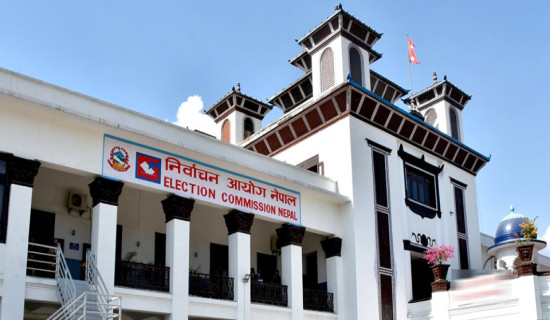- Monday, 19 January 2026
EV Charging Stations
With the growing use of electric vehicles (EVs) in Nepal, the process of constructing charging stations across the country is now gaining steady momentum. Such stations are sure to contribute towards reducing carbon emissions and fuel costs though charging is a bit time consuming. It needs no mention that the rising rate of carbon emissions has exacerbated the problem of climate change. In view of an alarming level of global warming, countries are required to take urgent measures to minimise carbon emissions by promoting renewable sources of energy and reducing the use of fossil fuels. As the country is striving for achieving the Sustainable Development Goals (SDGs) by 2030, it needs to make a paradigm shift when it comes to consuming energy. With Nepal generating more surplus hydroelectric power, it is not difficult for the nation that is rich in hydropower potentials to opt for clean and green energy. When the consumption of fossil fuels drops, it significantly helps in cutting down their imports, thereby saving billions and reducing the nation’s trade deficit. The country imports such fuels worth billions of rupees every month.
A total of 51 electric vehicle charging stations, built by Nepal Electricity Authority (NEA) in different places throughout the nation, have come into operation. These fast charging stations have been constructed along the major highways, in bus parks and large cities of all the seven provinces under the electric vehicle charging infrastructure development project. Installations of the stations have been possible with the investment of NEA and concessional loans from the Asian Development Bank (ADB) and the technical support of the Norwegian government. Of the total charging stations in operation, six are in the Kathmandu Valley while two are in Dharke of Dhading, three in Chitwan and one each in Bhaktapur and Lalitpur. Likewise, three stations are in Sindhuli, two each in Mahottari and Sarlahi districts and four in Jhapa district. The charging stations have been built at a cost of about Rs. 400 million. Big buses, microbuses, trucks and cars can be charged in 26 stations while small and big cars can be charged in 25 centres.
All the 51 charging stations can be controlled from Kathmandu. After having charged their vehicles, customers can foot the bills through QR code and mobile app. With these charging stations, the government also aims to boost the domestic consumption of electricity and develop an environment-friendly transportation system in the country. What is more noteworthy is that the charging costs an average of 70 paisa per kilometre for cars, 80 paisa for SUVs, 90 paisa for microbuses and 120 paisa per kilometre for buses. The charging can be completed from half an hour to one hour, depending upon the battery capacity. According to a news report published in this daily on Thursday, each charging station has a 142-kilowatt capacity charger, a 50 kVA transformer for power supply, and an online charging system.
DC chargers of 60-60 kilowatts and 22-kilowatt AC chargers are placed there. Because of this, three vehicles, including big buses, can be charged at the same time. A contract was signed with Wanbang Digital Energy Corporation Ltd., China for the construction of charging stations, supply, installation, testing, operation and maintenance. The contractor firm will be responsible for carrying out maintenance of the charging stations for five years of their operation. Operating electric vehicles are 15-20 times cheaper than those running on petroleum products. NEA is planning to set up additional 500 charging stations across the nation to encourage customers to go for electric vehicles.












-original-thumb.jpg)




